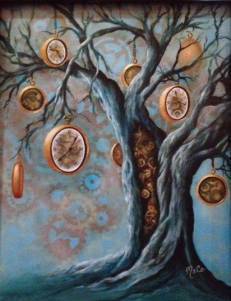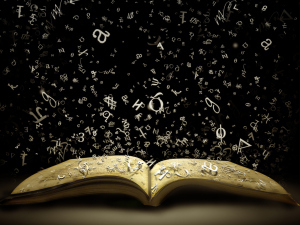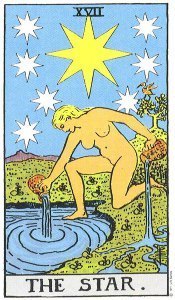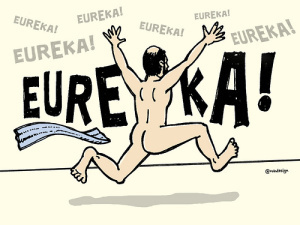Eric Witchey's Blog: Shared ShadowSpinners Blog , page 29
February 4, 2015
Facing The External Editor Or How To Make A Writer Cry Like A Wet Kitten
By Christina Lay
There once was a time long, long ago when I felt pretty sure on my feet regarding this whole craft of writing thing. After all, my friends loved my stories and told me how great a writer I was. And I sold stuff, so obviously editors thought I was pretty great too.
Then I made my first book sale to a small but professional publisher. I awaited my first round of editing with confident excitement. I knew my punctuation skills were lacking somewhat, but I’d been writing for forty years, selling short stories for twenty and I figured the manuscript would only need a light going over. I’d revised and edited it so carefully before submitting it, after all. I’d done my best and it was pretty darn good.
Pregnant pause.
A year and three projects later, not much has changed. Third book, new editor, same writer. When I open the file and see that there are 2,234 insertions, deletions, formatting changes and comments to deal with, I am still a bit taken aback. This editor must be insane, I think. A comma nazi. A speaker of some obscure dialect.
True, about a thousand of those insertions and deletions have to do with my shaky grasp of commas, ellipses, the overuse of italics, my tendency to write really long paragraphs and so on. On the first go around, I tear through those comments, mindlessly accepting every punctuation and formatting change and (reluctantly) attempting to learn something in the process.
I suppose there are writers out there somewhere who have a firm grasp on all the rules of grammar and punctuation, who can diagram a sentence like a superhero, who outline their novels in advance and perhaps even know what they did and how they did it. ��Maybe they fix several hundred of those problems before they submit it for publication. (For well-thought out advice on the self-editing process, I recommend you check out Matt Lowe’s excellent post here.)
Being more of a jump-of-a-cliff-and-write-myself-out-of-the-resulting-predicament sort of writer, for me editing involves facing up to a lot of not entirely thought out plot twists, inexplicable character motivations and odd internal dialogue��that has little to do with the story. ��This is when the real work starts.
On the second run through the edited file, I move on to the deeper issues, the ones that require concentrated thought, the kind of thought that makes my brain hurt and my feet to spontaneously carry me to the fridge. From simple word repetitions to point of view violations to awkward construction to floating body parts, passive voice, faulty simultaneous action and the dreaded ambiguous pronoun – all kindly pointed out by my sharp-eyed editor- these issues force me to deconstruct sentences, question purpose, recreate rhythm, delete, delete, delete and work the hell out of my dictionary. ��Then comes the hard part. ��In the third round I address those confusing passages that aren’t doing what they’re supposed to- which is convey meaning, tell the story, create excitement, elicit emotion, conjure empathy. ��Damn.
This is a process that takes many hours over the course of several days. I become completely immersed in the world of the book, which I am now convinced sucks beyond any hope of redemption. A friend commented that this process sounds tedious. I mean, come one, 2,234 corrections? Oddly enough, and by odd, I mean I must be a masochist, I’m never once bored during this process. This is my craft, my chosen boulder, my art. Besides, I’m too damn scared to get bored.
For the deeper I go, the harder the challenges presented, the more the fear kicks in. Fear that I won’t be able to do it. I won’t be able to fix it. It’s too broken. I’ve reached the level of my competence and cannot go higher ��� not in the ten days I have to get that steaming pile of hideous pages back to the editor! I lie awake at night full of dread, full of self-doubt and the crippling realization that I don’t have the slightest clue of how to write a good novel.
But they bought it, right? So there must be something redeemable about it. Possibly even, something good.
Sitting at the keyboard, taking the editing process one comment, one syntax error, one failed metaphor at a time, I know I can write. I know I can do this. Working with an editor pushes me beyond my comfort zone, beyond what I can do by myself. It forces me to be better than I am.
When I finally hit send and collapse into a puddle of depleted goo, I know that miraculously I have done better than my best. And with luck and determination, the next book will be even better.
Tagged: editing, fiction, Novel Writing, writing

February 1, 2015
Post Apocalyptic, by Matthew Lowes
Post Apocalyptic
I’ve always enjoyed apocalyptic themes, and stories of the time beyond. As a child it intrigued me that there could be a time beyond, a time after the end of the world. Like those first clear thoughts of death, the idea of an apocalyptic end to the world was both terrifying and mind expanding.
The Greeks had an idea that the consideration of human beings should widen in expanding circles, from self to family to community to state, and ultimately to the world. The post apocalyptic story extends this notion of ever widening circles forward and backward through time, breaking through the boundaries of contemporary history, culture, and society. For we are now living in the post apocalypse of ages past, and the world��we know cannot last. Nothing can stand — no human civilization anyway — against the eons of futurity the universe has in store for us. So whether this current world ends with a bang or is transformed in a long whisper, it will some day��be gone.
And yet … post apocalyptic tales tell us there is more to come, good and bad, after the radioactive dust settles on the ruins of the time that was. Another��age��will come, when people will look back on this world of��wires and microchips, of sky scrapers and superhighways, of automobiles��and fire belching machines. They will look back on our wars and ideas, on our great��riches and destitute poverty. They will look back and it will all seem strange to them.
Post apocalyptic stories often act as the conscience of history and humanity. They show us, simultaneously, the great heights we can achieve, and the terrible flaws which could be our downfall. In extreme conditions, whether in the midst of catastrophe, or in the wastelands of the aftermath, they show us the full spectrum of human nature, from our noble compassion to our savage depravity. In the end, perhaps, that is their charm, an ability to contain equal measures of horror and hope: horror that our time must end, and hope that when this age is gone, someone will pick up the pieces and carry on.
~
Some��favorites off the top of my head:
Last and First Men by Olaf Stapledon
The Dying Earth by Jack Vance
The Road by Cormac McCarthy
Nausicaa of the Valley of Wind by Hayao Miyazaki
Dark Universe by Daniel F. Galouye
Fire and Ice by Robert Frost
Darkness by Lord Byron
And Death Shall have No Dominion by Dylan Thomas
Tagged: fantasy, fiction, horror, post apocalyptic, post apocalyptic fiction, post apocalyptic stories, science fiction

Post Apocalyptic
I’ve always enjoyed apocalyptic themes, and stories of the time beyond. As a child it intrigued me that there could be a time beyond, a time after the end of the world. Like those first clear thoughts of death, the idea of an apocalyptic end to the world was both terrifying and mind expanding.
The Greeks had an idea that the consideration of human beings should widen in expanding circles, from self to family to community to state, and ultimately to the world. The post apocalyptic story extends this notion of ever widening circles forward and backward through time, breaking through the boundaries of contemporary history, culture, and society. For we are now living in the post apocalypse of ages past, and the world��we know cannot last. Nothing can stand — no human civilization anyway — against the eons of futurity the universe has in store for us. So whether this current world ends with a bang or is transformed in a long whisper, it will some day��be gone.
And yet … post apocalyptic tales tell us there is more to come, good and bad, after the radioactive dust settles on the ruins of the time that was. Another��age��will come, when people will look back on this world of��wires and microchips, of sky scrapers and superhighways, of automobiles��and fire belching machines. They will look back on our wars and ideas, on our great��riches and destitute poverty. They will look back and it will all seem strange to them.
Post apocalyptic stories often act as the conscience of history and humanity. They show us, simultaneously, the great heights we can achieve, and the terrible flaws which could be our downfall. In extreme conditions, whether in the midst of catastrophe, or in the wastelands of the aftermath, they show us the full spectrum of human nature, from our noble compassion to our savage depravity. In the end, perhaps, that is their charm, an ability to contain equal measures of horror and hope: horror that our time must end, and hope that when this age is gone, someone will pick up the pieces and carry on.
~
Some��favorites off the top of my head:
Last and First Men by Olaf Stapledon
The Dying Earth by Jack Vance
The Road by Cormac McCarthy
Nausicaa of the Valley of Wind by Hayao Miyazaki
Dark Universe by Daniel F. Galouye
Fire and Ice by Robert Frost
Darkness by Lord Byron
And Death Shall have No Dominion by Dylan Thomas

January 21, 2015
What the Hell Is Subtext? by, Eric M. Witchey
 What the Hell is Subtext?
What the Hell is Subtext?
by Eric M. Witchey
I���m a lucky guy. A couple of writing groups in and around San Antonio, Texas recently pooled their resources to fly me to San Antonio to teach. Some were publishing professionals. Some were aspiring professionals. All were wonderfully kind and accomplished. While there, I even got to do some touristy things.
So far, I���ve written��in general terms about things that were fun for me. Readers may now be thinking, ���Get to the point, Eric.��� However, if that first paragraph were in a short story or a novel, the reader would be, in the back of their mind, wondering what it means in the context of dramatic development. If, as would probably be the case, it added nothing to the reader���s sense of tension or character change, they would get disgusted, drop my story, and never look at another one of my tales.
Go, readers!
That���ll teach me economy in language. More importantly, it will teach me to figure out ways to imbue even apparently mundane passages with some additional layer of meaning, subtext.
Normally, I teach subtext by introducing students to a seminal article in discourse analysis. I then extrapolate from that article into the use of implication in dialog. Once that has become clear, I demonstrate how ���subjective interpretation of setting through the character filter��� can create an underlying sense of changing character psychology in the reader���s experience. That all takes a day or two, and it takes a fair amount of practice.
Did you catch the subtext? I���ll translate. ���This set of very specific skills takes time and practice.���
However, I���m writing a blog entry, so I���ll try to give you the quick and dirty. I stopped short of calling this a shortcut. It isn���t. The time and practice is still necessary.
For my first bit of sleight of hand, I���m going to replace the term ���subtext��� with another term I think is more descriptive of the function of a number of techniques. The term is ���implication.��� Writers manipulate the text in order imply things that are not actually part of the explicit text.
Above, in the paragraph beginning with ���Normally,��� I described a longish process that wasn���t actually necessary if I just want to tell you what I���m about to tell you. However, I did put it in the blog entry, which tells the reader that I am either just horribly wordy or was implying something. The reader tries to fit what I wrote into their growing sense of the purpose of this blog entry. Since I then talked about a shortcut and the technobabble paragraph is more than I needed to write about the shortcut, the reader tries to find additional, underlying meaning. If they can���t, they think I���m stupid. If they can, they think I���m brilliant. In truth, they don���t even actually know they are looking for that subtext. The brain does it automatically.
In fiction, if a character says more (or less) than they would normally say or than they actually need to say in order to respond to their circumstance, some other meaning is being conveyed. The reader unconsciously examines text in conjunction with context in order to draw the special meaning from the text.
In practical application in fiction, it looks something like this.
���Honey,��� he said, ���I need to take the car to Bend this weekend.���
���The Metzgers are having a lawn party on Sunday,��� she said. ���Jennifer will be sixteen, and her oldest brother, the Army doctor, is in back from Afghanistan. Can you believe he wants to meet our daughter?���
She said a lot more than she would normally say in response to his statement about the car. In fact, all she had to say was, ���Okay.��� Of course, she might also have said, ���No. We have a party to go to.���
Instead, she said, interpreting the subtext:
You have other responsibilities this weekend. Show some respect to our friends. Demonstrate that you at least pretend to care about their daughter. If you can���t pretend to care about our friends, then think about the returning soldier and how important his homecoming is. If you can���t get your head and heart around that, then at least think about the happiness of your own daughter.
To get all that from a couple lines of dialog, the reader needs a little more background. In fact, the reader needs the same things we need in the real world in order to interpret the wonderfully obscure things we say to each other. The following is a classic example is of people communicating by using implication:
���Honey, what time is it?���
���The ice cream truck just went by.���
The answer does not, strictly speaking, answer the question. However, both people know it is four o���clock because they share history that involves the ice cream truck.
Consider once more the car and weekend problem from above. In order for the reader to get the full impact of the indirect statement made in response to the statement about using the car, the reader has to be aware of the same shared experiences of the characters that allow the characters on stage to speak to one another in indirect ways.
We use this kind of implication all the time when we talk. In fact, it turns out that when we are trying to cooperate and get something done, we speak pretty directly to one another. If you and I are building a dog house together, I can say, ���Give me that hammer.��� Your answer might be, ���Okay.��� It might also be to hand me the hammer. Either way, it���s pretty direct and clear.
However, if you and I have some personal history with home projects not getting done, you might answer differently. Consider this dialog couplet:
���Give me that hammer.���
���And the paint brush, broom, and shovel?���
Now, suddenly, you are telling me I have a lot more to do. Additionally, neither one of us is having a good time.
Turns out that we figure out what these kinds of non-responses mean because they differ from direct, cooperative responses in one or more of the following four ways.
The response says more (or less) than is needed.
The response doesn���t appear at the surface to be a relevant to the initial statement or question.
The response isn���t clear.
The response somehow lacks the needed quality to be a full response.
The short list is quality, clarity, quantity, and relevance. Even so, this kind of communication relies on shared experiences. Those experiences can be shared within culture, community, family, or individual association.
Given the above, getting dialog to be indirect so that it implies more than is said is a pretty direct process. Start with something direct and revise it until is drips with additional meanings.
Draft 1:
���Take me home,��� she said.
���Okay,��� he said.
Draft 2:
She says, ���My bedroom ceiling is more interesting than these people.���
���That guy,��� he said, ���spent last year in Tibet.���
���And my bedroom is warmer than this field.���
���They���ll light the bonfire in a minute.���
���Two cuddled under quilts is the best warm.���
���Oh,��� he said. ���I���ll just say goodnight.���
In draft one, the two people are being cooperative and direct. In draft two, one is being too clever, and the other is being a bit dense. A lot more is going on in terms of the psychological interactions of the desires of the two people. Of course, the passage could be improved���a lot. That���s not the point. The point is the implied meanings. In this case, the reader gets them because of shared experience in cultural context.
If, as writers, we understand our characters, their growth, their needs, and their backgrounds well enough, we can manipulate the text so that multiple layers of meaning appear from this kind of indirect interaction.
Narrative, when compared to implication in dialog, is both the same and different. If the narrator is external, the narrator can be seen as engaged in a sort of dialog with the reader. What has come before in the main story or in back story can be used as shared knowledge (the ice cream truck). However, narrative is usually more powerful if it has moved into the heart/mind of character.
The following two passages represent a transformation from one of the great traps into which writing instructors fall, focusing on the use of ���concrete details,��� to the use of those same details to imply more about the life of the character than is strictly accounted for by the text.
Yes, concrete details are necessary. However, students of the written word often focus too tightly on the detail and miss the point that the story is about a character who inhabits the fictional world.
Passage 1 (concrete details):
He entered through the south door and paused. He wore J. C. Penney docksiders, pale blue argyle socks, tan cotton Dockers, a burgundy, button-down Bugle Boy shirt, and a thin gold chain around his neck. His build was medium and toned. He had a sharp jaw line, straight nose, blond hair and blue eyes. He wore a businessman’s haircut. He looked to his left. He looked to his right. He crossed from the door to the dining room table and placed a small pile of envelopes on the table. The table was made of stained cherry wood veneer over a pine base. In places, the veneer was worn through and the pine was visible. The table had brass screws holding it together. Three chairs were mission, two were Victorian, one was a folding steel chair. He walked around the table, called his wife’s name, and exited the room through the north door.
Passage 2 (implication through the use of details):
Squeaking hinges announced his arrival and reminded him that Sharon had a honey-do list for him this weekend. He crossed the threshold into neutral ground, the dining room, paused, and turned his head to better catch noises coming from the kitchen. Concentrating on the sounds of the house, the ticks and creaks and movement of air through dry, old cracks in the walls and floorboards, the mail he held nearly slipped from his sweating hand. He gripped it more tightly and crossed to the dining room table, careful to tread lightly on the white-rubber balls of his topsiders. He sorted the mail so the bills were on the bottom then set the stack in a neat pile at Sharon’s place, in front of her martyr’s chair, the folding metal church chair she insisted that she use so no one else would have to be subjected to its indignity. He wiped his palms on the burgundy Bugle Boy she’d given him for his interview, then he thought better of it and checked to see if he’d stained the shirt with his own sweat. Satisfied that he was presentable, he rounded the table and headed for occupied territory–her kitchen.
I showed these passages to one of my writer friends. Their response was, ���Eric, that���s just close, subjective narrative.���
Well, yes. It is.
That���s sort of the point of close, subjective narrative. We know the characters, their needs, their current desires, their underlying desires, their changes, their emotions, their back stories, their relationships, and their minds. Because of that knowledge, we can write in a way that implies many things that are not explicit in the text.
For example, we can write narrative that reveals levels of marital tension, the nature of personal fear, levels of social dominance, tacit agreements about control of territory, habitual behavioral dynamics, and the psychological underpinnings of two people who have driven one another to estrangement. Later, the reader will share this understanding with character and narrator. If done well, the reader won���t even know they have picked up on these cues. These things can then be exploited more deeply through indirect dialog and subjective narrative as a story moves forward.
The subtext of the opening paragraph, based on shared experience with my friends in Texas, is, ���Thank you.���
I suppose I should stop now. This blog entry is late, and I have said a lot more than I needed to say in order to fulfill my responsibility to my cohort of shared bloggers.
Since I have written more than was strictly needed, there is subtext. The subtext is, to be explicit, that I believe this idea of implication (subtext) is very important for writers who want to enhance the reader���s experience of story.
Tagged: author, belief systems, Betrayal, blogging, Characters, context, creative process, creativity, Elizabeth Engstrom, Eric M. Witchey, Eric Witchey, fiction, flash fiction, genre, ghost story, how to, Wordcrafters, writing, Writing Dark Fiction, writing habits

January 14, 2015
Time to Write, by Cheryl Wilson

“Time” Original Oil by Cheryl Wilson
It���s the beginning of a new year, another rotation around the sun. It is a date on our calendars when a large portion of humanity vows to accomplish one dream or another, before we begin yet another rotation the following year. And no matter what your individual 2015 resolution is, each resolution has one main element in common, each will require���time.
For writers��� our resolution is generally vowing to do just that���write. When was the last time you felt you had time to write? If you are not a seasoned writer, or a very disciplined writer, and the last time I checked most of us artist types do not have the ���d��� word���discipline���flowing in steady streams through our DNA, then I���ve no doubt finding or making time to write, is tops on your list for this new year.
How often have you heard or said, ���If only I had more time to write���? I will now ask that you take a moment to ponder the quote below.
No I���m not going to go into a quantum physics lecture on the nature of time, but what I can do is give you the following observation.
Time���when sitting at my keyboard staring at a blank screen and willing words to pour out onto the page, time appears to have stopped while I hear the ever so slow tick, tock of an old clock ringing loudly in my head. However, when I���m on a roll, when the words just pour out of my fingers like manna from the heavens, time appears to go by way too fast, especially if I have only a set amount of time before leaving for the day job. So yes, time can be an illusion. Thus, for myself I have come up with the following equation regarding my time and writing.
Writing time equals���one second: one word, one sentence: one minute, one paragraph: one hour, one chapter or short story: one month. And if the muse strikes, perhaps, just perhaps���one great novel, or many: one lifetime lived. You see it���s all a matter of what particular illusion we place on the word���time.
And how lucky are we to have chosen this art form, where the constraints of time have no boundaries? We writers transport our readers from present, to past, to future with ease. We reinvent history, reshape current events and foresee the future all with the simple flow of ink from a pen, or the strike of a key on a keyboard. Who said time travel was not possible?
But it all begins with that first word, in the first second, and we all have at least one second to spare, don���t we?
Tagged: art, creativity, writers

January 7, 2015
The Epiphany or ���Eureka!�� I have it!���
By Cynthia Ray
January 6th is the feast of the Epiphany in the Christian tradition, celebrating the arrival of the three wise men to the child Jesus.�� While it can mean the literal recognition of the Christ within, this story may��also be understood in a symbolic way to help us to understand where inspiration comes from and how to tap into it.
These Magi, or magicians, represent the conscious mind coming to the realization of the light or truth which the subconscious mind has given birth to after a long period of gestation-a personal epiphany. ��The Magi were visionaries, they believed and followed a star that had meaning only for them.�� Others may have seen the star, but only they knew where it would lead.
If we accept this, then how can we undertake such a��journey?�� Why would we want to go on such a perilous undertaking? ��What star would we follow?
Recently I heard��Ursula LeGuin���s famous award acceptance speech. ��In it, she gives an admonition to writers and artists to become visionaries. ��LeGuin says, ���I think hard times are coming when we will be wanting the voices of writers who can see alternatives to how we live now and can see through our fear-stricken society and its obsessive technologies to other ways of being, and even imagine some real grounds for hope. We will need writers who can remember freedom. Poets, visionaries ��� the realists of a larger reality. ������
Hear��Ursula LeGuins speech here
Wow!�� That hit me right in the gut.�� As writers and artists shouldn’t that be our highest quest? ��To be realists of a larger reality. ��To show truth, to inspire, to lead.�� If so, once our intellect, or conscious mind decides on the quest/question and sets the conditions, then the subconscious mind does its work, hidden in the deeps of the universal mind, where all truth awaits.�� Follow the star.
In the Star Tarot card,�� the two pots of water represent the two aspects of mind, the conscious and subconscious. The functions of the Star card are Meditation and Revelation; exactly what an Epiphany��consists of.
Epiphanies are experienced as a sudden realization or illumination of thought.�� They are often described as a ���flash of genius���.�� Archimedes illustrated this exactly when he jumped from his bath and ran naked from his house, exclaiming�� ���Eureka!�� I have it!��� after he discovered his groundbreaking method to determine the density of an object. Newtons theory of gravity is another example of an epiphany, triggered by his observation of a falling apple. ��You have probably felt that way a time or two when something fell into place.
In both cases, these scientists had spent a lot of time contemplating, thinking and focusing on specific problems with their conscious mind.�� Meanwhile the subconscious, a beautiful fertile receptacle that allows and nurtures all seeds planted there, brought forth�� seemingly miraculous answers to the questions posed. ��These experiences are memorable to us and even seem supernatural, but they are the natural result of the creative process we put in place with our focus.
So in order for an epiphany to occur, there needs to be:
��A clear question
A desire to know and understand something
A��time of contemplation and focused thinking, where one wrestles with the issue, studies and labors to understand
We could not do better than to consider Ursula���s admonition in this, looking for hope, a leading out of the dark and how we could express that in our art. What if we all asked, “What can I, as a writer/artist, do to show new ways of being to a world in need of awakening, of hope?”

While the conscious mind is occupied with these things, below the surface, in the deep waters of our subconscious womb, things will percolate, grow and gestate, until they rise to our consciousness, born seemingly out of nowhere and ���it all becomes clear.���
Embrace the knowing that our subconscious will eventually and inevitably give birth to what we are seeking and focusing on,��whether it is the resolution to our characters dilemma in our story, or startling perceptions about mankind’s current state. ��This is the star we must follow.

Whether it is a shared wisdom we tap into and from which our Epiphany springs, or from our own personal depths, the��fact is that there is a deeper wisdom which will answer all of our questions if we put them out there and meditate, contemplate and stew in them long enough.�� What a powerful tool we have at our disposal!
Wishing you many Epiphanies in this new year, in a world that is a better place to be-because of you and your work.
Tagged: art, author, belief systems, change, Characters, creative process, creativity, depression, Emotion, evolution, exploration, fantasy, fear, fiction

The Epiphany or “Eureka! I have it!”
By Cynthia Ray
January 6th is the feast of the Epiphany in the Christian tradition, celebrating the arrival of the three wise men to the child Jesus. While it can mean the literal recognition of the Christ within, this story may also be understood in a symbolic way to help us to understand where inspiration comes from and how to tap into it.
These Magi, or magicians, represent the conscious mind coming to the realization of the light or truth which the subconscious mind has given birth to after a long period of gestation-a personal epiphany. The Magi were visionaries, they believed and followed a star that had meaning only for them. Others may have seen the star, but only they knew where it would lead.
If we accept this, then how can we undertake such a journey? Why would we want to go on such a perilous undertaking? What star would we follow?
Recently I heard Ursula LeGuin’s famous award acceptance speech. In it, she gives an admonition to writers and artists to become visionaries. LeGuin says, “I think hard times are coming when we will be wanting the voices of writers who can see alternatives to how we live now and can see through our fear-stricken society and its obsessive technologies to other ways of being, and even imagine some real grounds for hope. We will need writers who can remember freedom. Poets, visionaries — the realists of a larger reality. …”
Hear Ursula LeGuins speech here
Wow! That hit me right in the gut. As writers and artists shouldn’t that be our highest quest? To be realists of a larger reality. To show truth, to inspire, to lead. If so, once our intellect, or conscious mind decides on the quest/question and sets the conditions, then the subconscious mind does its work, hidden in the deeps of the universal mind, where all truth awaits. Follow the star.
In the Star Tarot card, the two pots of water represent the two aspects of mind, the conscious and subconscious. The functions of the Star card are Meditation and Revelation; exactly what an Epiphany consists of.
Epiphanies are experienced as a sudden realization or illumination of thought. They are often described as a “flash of genius”. Archimedes illustrated this exactly when he jumped from his bath and ran naked from his house, exclaiming “Eureka! I have it!” after he discovered his groundbreaking method to determine the density of an object. Newtons theory of gravity is another example of an epiphany, triggered by his observation of a falling apple. You have probably felt that way a time or two when something fell into place.
In both cases, these scientists had spent a lot of time contemplating, thinking and focusing on specific problems with their conscious mind. Meanwhile the subconscious, a beautiful fertile receptacle that allows and nurtures all seeds planted there, brought forth seemingly miraculous answers to the questions posed. These experiences are memorable to us and even seem supernatural, but they are the natural result of the creative process we put in place with our focus.
So in order for an epiphany to occur, there needs to be:
A clear question
A desire to know and understand something
A time of contemplation and focused thinking, where one wrestles with the issue, studies and labors to understand
We could not do better than to consider Ursula’s admonition in this, looking for hope, a leading out of the dark and how we could express that in our art. What if we all asked, “What can I, as a writer/artist, do to show new ways of being to a world in need of awakening, of hope?”

While the conscious mind is occupied with these things, below the surface, in the deep waters of our subconscious womb, things will percolate, grow and gestate, until they rise to our consciousness, born seemingly out of nowhere and “it all becomes clear.”
Embrace the knowing that our subconscious will eventually and inevitably give birth to what we are seeking and focusing on, whether it is the resolution to our characters dilemma in our story, or startling perceptions about mankind’s current state. This is the star we must follow.

Whether it is a shared wisdom we tap into and from which our Epiphany springs, or from our own personal depths, the fact is that there is a deeper wisdom which will answer all of our questions if we put them out there and meditate, contemplate and stew in them long enough. What a powerful tool we have at our disposal!
Wishing you many Epiphanies in this new year, in a world that is a better place to be-because of you and your work.
Tagged: art, author, belief systems, change, Characters, creative process, creativity, depression, Emotion, evolution, exploration, fantasy, fear, fiction

December 31, 2014
What’s Your Message?
Why do you write?
What is it that you have to say?
What do you believe?
Why are you here?
What is your purpose?
The first class I took in graduate school (Applied Theology) required me to write a paper that articulated my personal theology. This was easy for me, as I’d been writing it out in various novels and short stories for over thirty years. But it wasn’t obvious to me at the beginning of my writing career, only as I could see certain aspects of my beliefs appear in my work over the years.
The rest of my classmates were not so lucky, and struggled mightily with this simple assignment. Simple, perhaps, but not easy.
I believe that we write fiction because we have a need to speak our truth. It takes a seasoned writer to cloak that truth in emotion and drama and not pound our readers with our message. This is one reason why a few gray hairs is almost a prerequisite to writing a good novel. Life experience, lessons learned, something of significance to say.
In short: a message.
What’s your message?
Some people confuse the author’s message with the theme of the book. Each book can have a different theme (teenage angst, man’s inhumanity to man, etc.), but the author’s message never varies. It springs from your depths, your soul. It is who you are.
If you have a favorite author, chances are you resonate with his/her message. That person could write romance, science fiction, or thrillers, and you’d still enjoy the work. Your favorite author may or may not be able to articulate his/her message, but it imbues every sentence, the choice of every noun and verb, every personal interaction, every dramatic scene of every book.
So what’s your message?
Don’t you think that writing your book might be made just a little easier if you knew what your personal message/philosophy/theology was? Or do you think that knowing it and also knowing that you must employ a cloaking device to keep it from being overly obvious to your reader would make writing your book a little tougher?
Writing fiction is a relentless pursuit of fearless self-examination. You cannot get away from that if you are to write a good, meaningful book that adds to the world’s body of literature and to the life experience of your reader. As chroniclers of our times and, more importantly, keepers of the literature, we do not need to add another shallow, insipid book to the Library of Congress. We need books that resonate. We need hard-won, difficult-to-write books filled with meaning and values. Those are the books that we all want to have written. Are those the books that we are writing?
We poise on the brink of a new year. This is a good time for each of us to take some time and meditate on our message.
Then write your heart and watch the magic happen.
Tagged: author, belief systems, Elizabeth Engstrom

December 24, 2014
Merry Christmas, Poor Wren of Irish Lore
Last week, Christina’s post about Krampus, St. Nick’s demon companion, filled me with a strange kind of glee. I love a little scary, and let’s be honest, if we’re talking the holiday season and harkening back to the Old Testament — talk about some scary shite! Those stories aren’t for sissies.
Since I’m of Irish descent rather than Czech, I decided to check out whether the Celts had a nice holiday demon in its pantheon of mythological creatures. Alas, I couldn’t find one. Maybe this just means the Celts had more obedient kids?
In any case, I had fun reading up on creatures such as the vampire called Dearg Due, which means “red blood sucker” and is a female demon who seduces men and then drains them of their blood. (I hadn’t realized that Bram Stoker, Dracula’s creator, was Irish — makes sense.) And, Leanan Sidhe, the beautiful and evil fairy-muse who was said to give inspiration to poets and musicians before killing them.

I’m not the only one who thinks this is creepy, right?
The creepiest holiday-related thing I found is called the “wren boy procession.” To the ancient Celts, the wren was a powerful positive symbol — the king of the birds. Wrens were believed to be a link between this world and the next. When I read between the lines of the various websites I perused, the wren only turned evil — “the devil bird” — about the time that Christianity took over the “pagan” Celts (no surprise — always seemed to happen that way, eh?).

Still part of the popular culture.
After that, the poor wren was said to have betrayed Irish soldiers who were fighting Norsemen by beating their wings on the Norse shields. The wren was also blamed for betraying St. Stephen, the first Christian martyr. As a result, the wren was hunted and then nailed to a pole at the head of St. Stephens Day (wren boy) processions every December 26th.
 Nice one, that — the ritualistic slaughter of wrens. There were parades and much merriment while the poor birds where basically tortured. Thank god killing wrens has died out as a tradition, but there are still some areas of Ireland where you’ll see the processions and hear this poem:
Nice one, that — the ritualistic slaughter of wrens. There were parades and much merriment while the poor birds where basically tortured. Thank god killing wrens has died out as a tradition, but there are still some areas of Ireland where you’ll see the processions and hear this poem:
The wren the wren the kings of all birds,
On St. Stephen’s Day it was caught in the furze
Up with the kettle and down with the pan
Give me a penny to bury the wren.
I love the holiday season, and I also loves me some cool symbolism — but man — I guess I asked for it when I decided to drill down into dark holiday themes. On a sweeter note, I found this tale written by the former National Poet of Wales.
 Happy Holidays from all of us at ShadowSpinners!
Happy Holidays from all of us at ShadowSpinners!
Tagged: Christmas, Ireland, lore, St. Stephens Day, symbolism, wren, wren boy procession, Wren Day

December 17, 2014
He Sees You When You’re Sleeping
By Christina Lay
I’ve been attempting to absorb the Czech language while expending little-to-no effort. One of my low-impact methods is to subscribe to a Czech word a day via email. This over-enthusiastic service recently sent me a bonus of fourteen words associated with St. Nicholas Day. I’d been trying to remember how to say Merry Christmas in Czech, so I clicked the link.
The first word on the list was fear (bát se). I double-checked the title of the article. Yup. St. Nick’s Day. The second was coal (uhlí). No surprise there. But those were followed by: devil (čert), annoy (zlobit), haunted (Strašidelný) and sack (pytel). The sack, by the way, isn’t for bringing gifts but for carrying away naughty children and it’s wielded by the devil, the Czech version of Krampus, St. Nicholas’ demon companion.

Cheery little elves? Think again.
The obvious question inspired by this rather negative list is this: When did we decide Christmas was not a time to terrorize children into behaving? What good is the whole naughty or nice categorization if no one really worries about being left a lump of coal? Why did jolly replace vengeful?
I get the sense Europeans are a tad more earnest about preserving their myths than we are in the states. I remember a big book of Fairy Tales my Czech grandmother sent us when we were little. These were old German folk tales and the lessons were clear. Anyone who misbehaved, or even thought about misbehaving, suffered immediate consequences. If you told a lie, for instance, a scissor-wielding imp might snip off the end of your nose. I still vividly recall the illustration depicting bright blood droplets spurting from the victims’ surprised faces.
Another picture seared into my mind is that of a little girl tarred and feathered. She looked so sad. I can’t remember her crime. I think it had something to do with vanity, or maybe laziness.
I’m not sure whether the emasculation of St. Nicholas into Santa Claus is good or bad as far as raising emotionally healthy children goes, but I feel a certain loss. I admit, as I child I was disturbed by those illustrations. It all seemed rather excessive to me, but those hard-edged fantasies stuck with me while the soft and squishy stories faded to a pastel wash of smiling inanity. The cruelty of the punishment in those old folk tales actually led me to question the wisdom of authority figures, and even God. Not the intended effect, I’m sure, but the point is those stories engaged me and made me think.
Several of us here on ShadowSpinners have spoken on the need, the benefits, and the desire for horror in our art. Are we robbing children of some essential element when we sanitize the stories and the myths they hear? Or is it simply that we’ve evolved in our child rearing? The stories that emerged from haunted places like the Black Forest – ancient, creepy, frightening stories – do they still serve a purpose, or are they archaic tales of unfair retribution designed to control and inhibit, safe only for emotionally mature adults?
The Santa who spies on you all year long, who watches you while you sleep, who tallies your wrongs and passes judgment- does he have a role in today’s sugarplum encrusted, flashing neon holiday?
I’m not arguing pro or con as I can see both sides. Santa as the Dark Man waiting to punish, I can live without. But St. Nicolas as the bringer of mystery, thrills, danger and excitement into the too bright, too removed from religion or meaning celebration Christmas is threatening to become, that guy I kind of miss.
As a spinner of the occasional dark tale, I mourn the loss of shadows. As a modern feminist, I celebrate the passing of control via violent threats. Either way, I can’t hear the song “Santa Claus Is Coming To Town” without imagining Vincent Price crooning the lyrics in a Dracula-esque style. Can’t you hear it?
You better watch out, you better not cry. Better not pout I’m telling you why. Santa Claus is coming….bwaahahaha.
Veséle Vánoce. And be good, for goodness sake.
Tagged: Czech, dark stories, fear, folklore, holiday traditions, horror, Krampus, Psychology, Santa Claus, St. Nicholas Day

Shared ShadowSpinners Blog
- Eric Witchey's profile
- 51 followers












